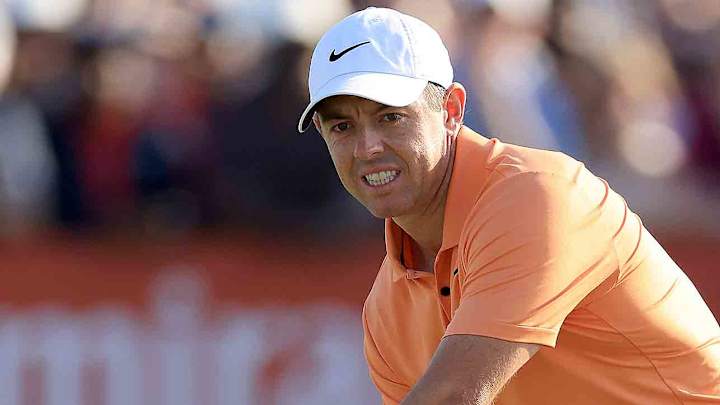What I Learned: Golf's Fickle Nature Rears Its Head Again With Rory McIlroy in Dubai

Starting this week, I have been asked by my editors at Sports Illustrated to come up with some random thoughts about the previous week.
The new column will be called "What I Learned" and will publish on Mondays. Of course, just turning 66, it’s hard to learn much and remember it as well, but I’ll give it my best effort.
If you play or watch enough golf, not just professional golf, but the stuff you and your friends call golf, you will see a lot of weird and at times miraculous things.
You will almost think that little white dimpled sphere has a mind of its own.
It’s always interesting when the best players on the planet look quizzically at the ball, hole, putter or club when a shot goes awry, like some mystical force made the ball missed its intended target.
And as your archive of made and missed shots grows, you will finally get to the point that you realize anything can happen in golf—and just when you start to forget, a missed shot or a ball caroming off a spectator or tree back in the middle of the fairway or green occurs.
Golf is fickle, even when you get to the lofty heights of Rory McIlroy.

Taking the first-round lead after shooting 62 in the Dubai Invitational, the four-time major winner found himself one shot back of Ryder Cup teammate Tommy Fleetwood going into Sunday.
Sunday had a lot of highlights for McIlroy including seven birdies in a second consecutive 67, but it was two of the three blemishes on his card that caught my fancy and reinforced the mystical properties of the game.
The first was a bogey 4 on the par-3 14th hole, where McIlroy three-putted from two feet. McIlroy later said three feet, but the neutral television announcers said two feet.
It’s a better story at two feet.
It was slippery, downhill little putt. One you have to be careful with, but McIlroy wasn’t and then he missed comebacker as well.
After the round he called the three-putt a mental error and a sloppy mistake.
Clearly correct on both accounts.
The bogey had come after a run of three consecutive birdies and would be followed up by another birdie, so his card was 3-3-4-4-3 going into the 16th hole.
With a Fleetwood bogey on the 16th and a McIlroy birdie on the 17th, the Ulsterman was in the lead on the 18th tee.
With water left and right of the tee, McIlroy found the left pond and after a penalty stroke made a bogey 5 while Fleetwood converted a 16-footer for birdie and the one-shot victory.
So, what did I learn from all this?
First, golf continues to be fickle.
Second, no putt is too short and the next time I watch a player in a Ryder Cup or U.S. Amateur refuse to give a putt, I won’t be critical. Anything can be missed.
And lastly, McIlroy talked after his round about how he took on a tee shot at 18 that was required, not the shot he was more comfortable with.
Doubt can kill a golf round, a lesson that McIlroy learned on Sunday in the Middle East for likely the umpteen time.
“I tried to hit a tee shot on the last; I probably wanted to hit a different shot because that was what was most comfortable,” McIlroy said. “But I tried to go with the shot that I feel like I should hit, and then I wanted to try to turn one over because it was the only way that I was going to be able to carry the bunker on the right, too. Just a bad swing at the end there.”
You must be fully committed to the shot. It’s when you’re not that bad things happen, which McIlroy got a refresher course in Sunday.
